Guineafowls
Guinea’s Overview
The Guineafowl is a very noisy and energetic bird, which is endemic to the continent of Africa. It’s considered an intermediate bird between New World Quails and Peafowls. The Guineafowl is known for being a social flighty bird that nests on the ground, and also looks like a very small Turkey.
There are six species for the Guineafowl in the wild, 3 of them are raised and domesticated, especially in North America. The most common and well-known domesticated species is the Helmeted Guineafowl. The others are the Crested Guineafowl and the Vulturine Guineafowl. While the Plumed Guineafowl, the Black Guineafowl and the White-Breasted Guineafowl are wild species that haven’t been domesticated.
Guinea’s Characteristics
The male and the female Guineas look almost the same, but with slight differences. Sexing Guineas usually happens when you focus on their voices, and only the females have a two syllable call sounds like “buck-wheat”. Also, male Guineas are slightly larger.
Guineas often lay their eggs out in the fields, and hatch their young by themselves. The hens lay plenty of small dark eggs from late spring through early fall and brood as many as 50 Keets (young Guineas) at a time. Keets hatch after almost 26 – 28 days of incubation and they are very susceptible to dampness during their first two weeks. As they may die from following the mother through dewy grass. After two weeks of age, they are probably the hardiest of all domestic land fowls.
Guineas are very useful in different ways, as they play a pivotal role in the control of ticks, flies, locusts, scorpions and other invertebrates. That’s why they are used intensively in insect controlling in gardens. Guineas are raised as backyard birds too, for their meat and eggs. The meat is drier and leaner than Chickens’ meat with a gamey flavor, that has marginally more protein, and roughly half the fat of Chickens or Turkeys’ meat, with slightly fewer calories per gram. Guinea’s eggs are also substantially richer than those produced by Chickens.
Guineafowls have Common predators such as; Wildcats, Dogs and large reptiles found in their native range like Snakes and Crocodiles. Although, Guineas suffered habitat loss, they’re still available in high numbers, except the White-Breasted Guineafowl which is a threatened species.

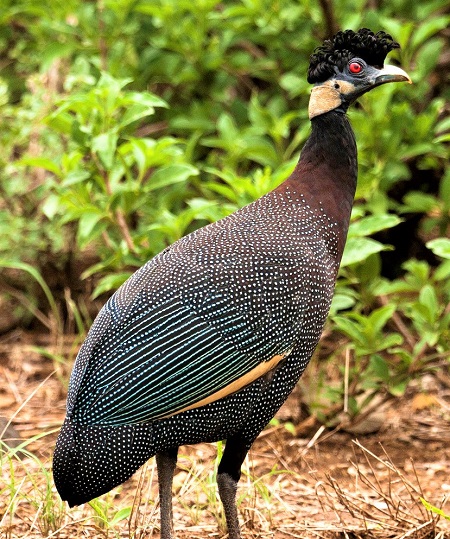

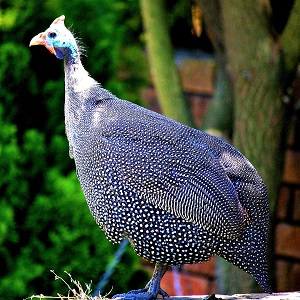
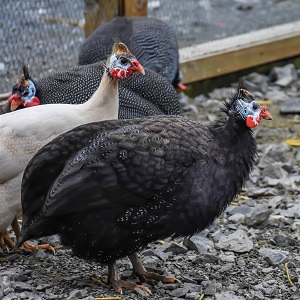
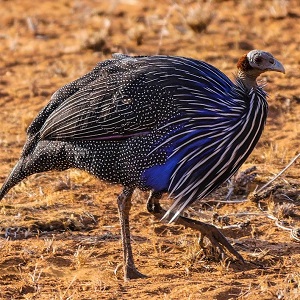
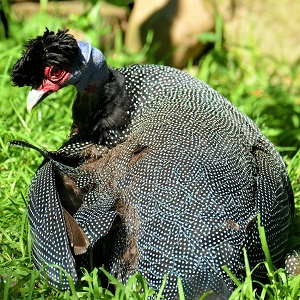
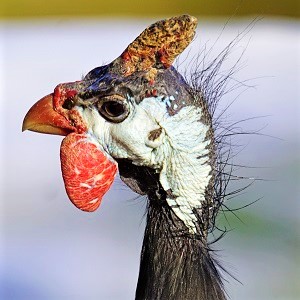
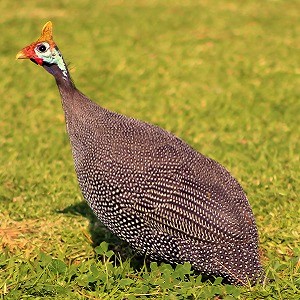
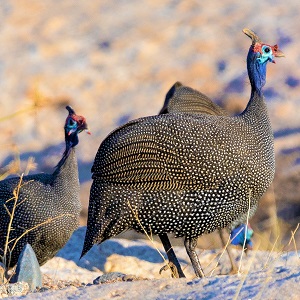
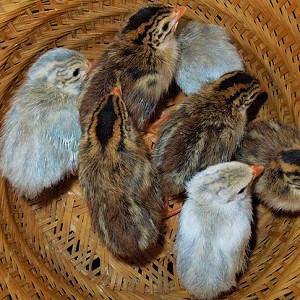
Breeds
